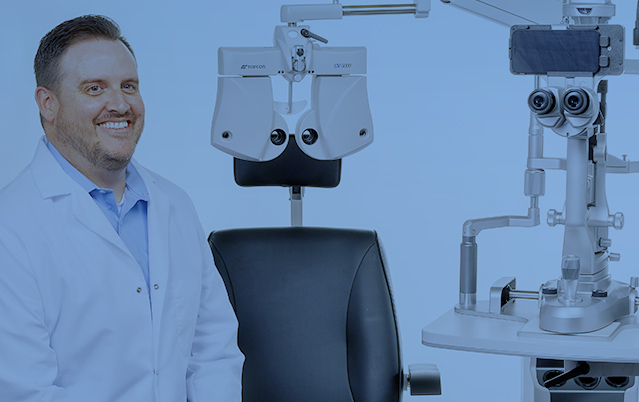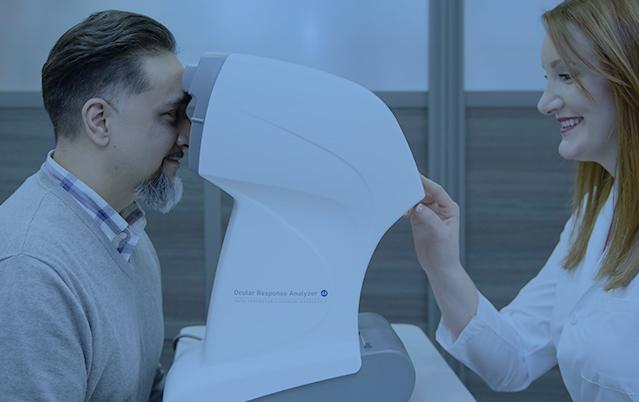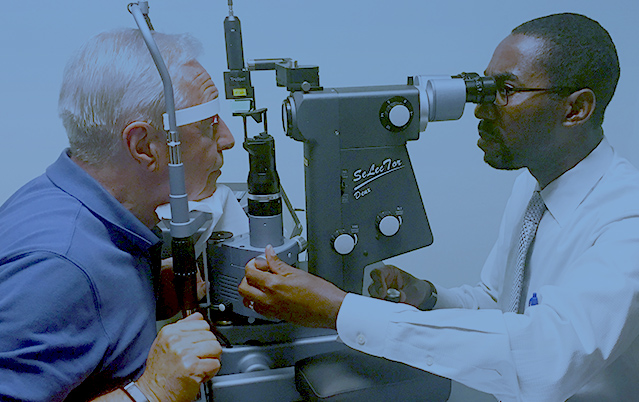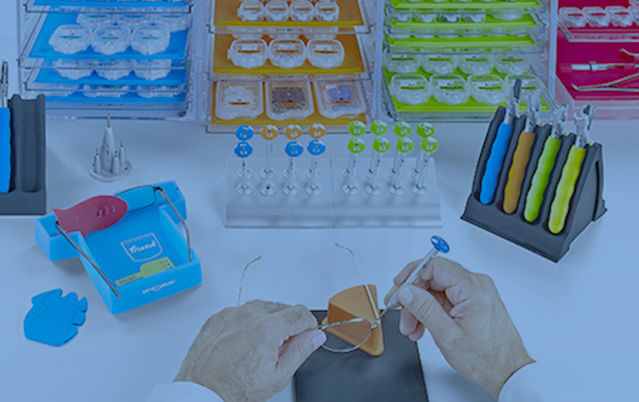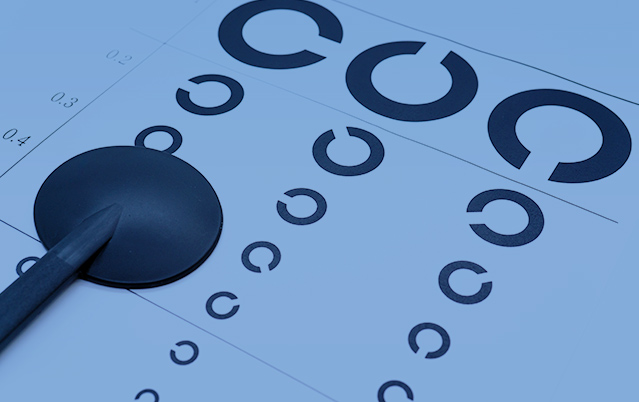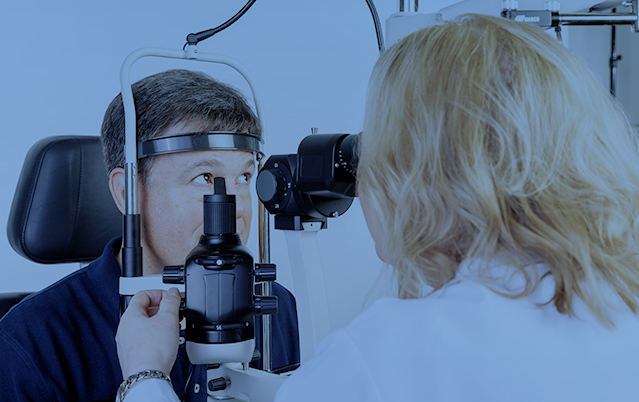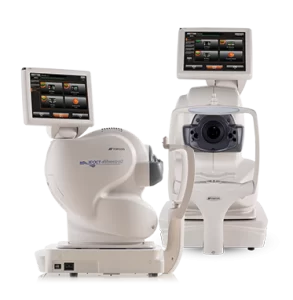The human eye is an amazing organ. With the fastest muscle in your body, it contains 107 million cells and can differentiate approximately 10 million colors. But when it comes to detecting severe conditions like glaucoma and macular degeneration, the naked eye’s powers are limited. That’s where OCT technology comes in handy.
OCTs have become a standard of care that every practice needs. If you don’t have an OCT or are in the market for a replacement/upgrade, here are the game-changing benefits that a dual OCT Fundus Camera can bring to your practice.
1. Robust Scans
A standard fundus image lets clinicians view the retina, optic nerve head, macula and retinal blood vessels, but that’s only scratching the surface of potential issues in the back of the eye.
“You’re only seeing the tip of the iceberg,” says Josh Olberding, Director, Advanced Technology at Lombart Instrument. “The tip didn’t sink the Titanic. It was the mass below the water that did her in. OCT fundus cameras like the Topcon Maestro2 allow us to see a greater detailed image of the eye to find pathology and manage diseases early.”
By cross-cutting the retina in a manner similar to an MRI machine, OCT’s high-resolution imaging creates a 3D map of a patient’s eye, enabling doctors to diagnose eye diseases in a single visit.
“Typical retinal examination tools like the slit lamp and indirect ophthalmoscope give you a classic clinical picture, something you can see with traditional fundus imaging to various degrees,” says Greg Hoffmeyer, Director of OCT Clinical Sales at Topcon Medical Systems. “OCT takes us deeper and shows subclinical findings the doctor normally cannot easily see via exam or fundus imaging. On top of that, it helps measure tissue with high precision down to single digit microns.”
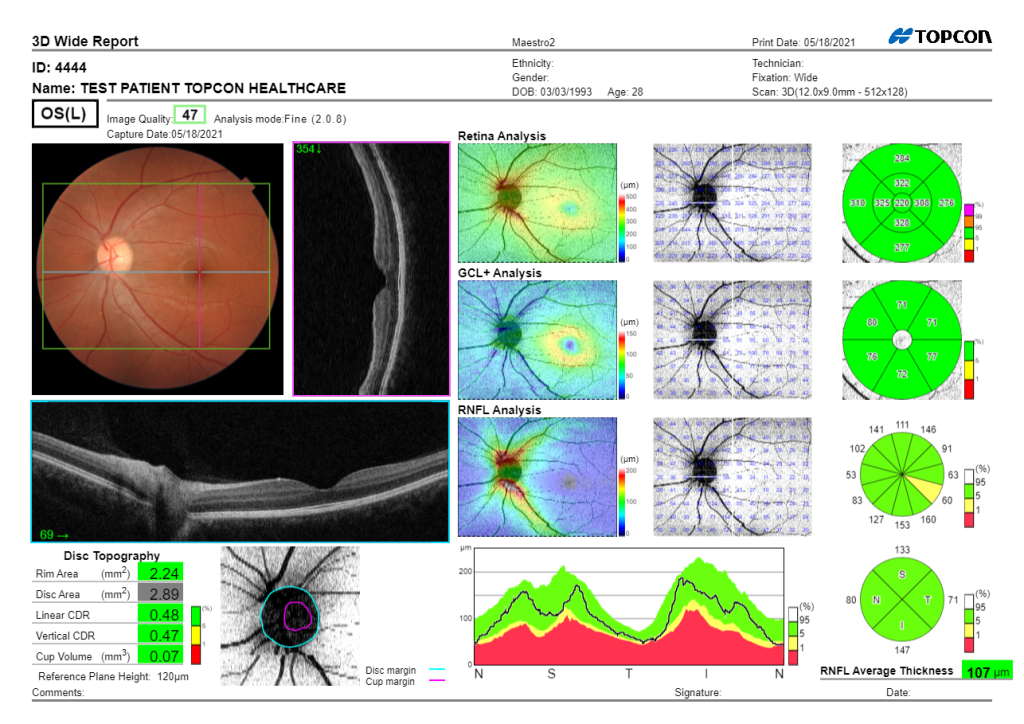
2. Quick and Easy to Use
Obtaining the data generated by current OCT technology used to depended on three separate imaging sequences that took nearly 8 minutes to administer. This process is now consolidated to pushing one button to perform a single, non-invasive scan and simultaneous fundus photo that takes just 30 seconds. Plus, innovative technology like that in the Maestro2 OCT Fundus Camera automatically transfers results (DICOM) to the patient’s chart and compares them against historical data.
This simplicity saves everyone time:
- Technicians can devote their efforts to other portions of the exam and see more patients.
- Doctors save time because they no longer have to cross-reference separate databases.
- The patient spends less time in the chair because all aspects of the exam have been streamlined.
3. Reduces False Referrals
We’ve mentioned that standard fundus images are limited compared to their OCT counterparts. This lack of subclinical data could lead to false referrals that degrades the patient experience and inconvenience the retinal physician.
“Retina specialists typically do not want to see patients they don’t need to see,” says Hoffmeyer. “Time is very important, and they lose money when seeing patients who shouldn’t be in their office. It’s taking a slot from someone who truly needs to be seen.”
OCT technology often enables the primary eyecare provider to make a diagnosis without the referral, keeping patients in-house and saving the time and money associated with seeing a specialist when it isn’t warranted. It also empowers and validates quality referrals for any issues most definitely requiring the opinion of a specialist.
4. Billable Services
Adding OCT Fundus Camera technology can be a moneymaking powerhouse for an optometry practice. Not only are offices able to see more patients, but the ability to examine the entire eye opens up a lot of additional billing codes. OCT systems give the optometrist the capability to offer more services while keeping some of those referral dollars in-house.
5. Stay in “The Game” Longer
Experts like Hoffmeyer and Olberding note that adding an OCT fundus camera can reignite some doctors’ passion for their jobs and often extend their careers.
“The number one piece of feedback I get from doctors is that they get more enjoyment when they come to work every day,” Olberding says, “particularly of doctors over 50 who went to school and started practices before OCT’s prominence”.
Believe it or not, Hoffmeyer says he knows some doctors who have even elected to postpone their retirement because using an OCT like the Maestro2 is more appealing to them than golf or fishing. “They’re like a kid in a candy store,” he says. “They’re just energized by the information that comes from being able to see things they’ve never seen before. “

